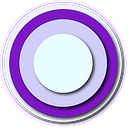Adrian Galvin
Bio and Class Ideas
My Short Story
I am a visualization and interface designer, currently working on the Perseverance Rover at NASA JPL. My life has centered around fusing art and science into powerful visual forms. I started my career as a modern dance choreographer, and I used medical illustration as well as stage design to keep me afloat monetarily. I owned a dance company in NYC for 5 years, and danced and designed for several national touring productions, as well publishing definitive illustrations for medical textbooks and research papers. I had a key insight, realizing that I was more deeply satisfied by applying my creative skills to scientific problems in the service of others, than I was by creating pure art just for myself. I went to graduate school at Carnegie Mellon University to study interaction design, and am now primarily a UX/UI designer with a specialization in data visualization for scientific research tools. I consider myself a researcher and academic to a certain degree, but primarily I am interested in making, creating new capabilities and possibilities for others.
Idea One: Drawing to Express Ideas
Drawing is an excellent way to convey ideas. You do not need to have any magic or inborn talent to do it, it is a craft that anyone can develop through careful practice. It can be applied to many problems: physical forms, abstract ideas, or interfaces to name a few. In this course we will start from the simplest drawn elements: points, lines, and curves. From there basic 2D geometric concepts such as circles, ellipses, rectangles, and grids can be explored. Practical applications of these concepts can include UI sketches, simple buildings, simple forms such as vases and tables. After this we will cover 3D concepts including: the human body, perspective, the built environment, and natural forms. To wrap up this class, we will bring all of these elements together to draw expressive product design and concept illustration pages. We will work as a team to develop a design culture in which we learn to form, communicate, receive, and implement effective feedback from other designers.
Data Visualization
Visualization design is a challenging interdisciplinary task which requires a variety of skills. In this class students would start from data sets that I provide, learning to explore the data to detect anomalies, insights, and narrative threads. Following this, we would study color and expressive forms for visualization, including some study of the close cognitive connections both universal and culturally specific. We will cover accessibility, including how to design for fundamental legibility, colorblindness, and users with ageing vision. After this first phase, we will examine a visualization designer’s techniques including sketching, prototyping, and some basic coding if it applicable. Finally, we will work as a team to develop a design culture in which we learn to form, communicate, receive, and implement effective feedback from other designers.
